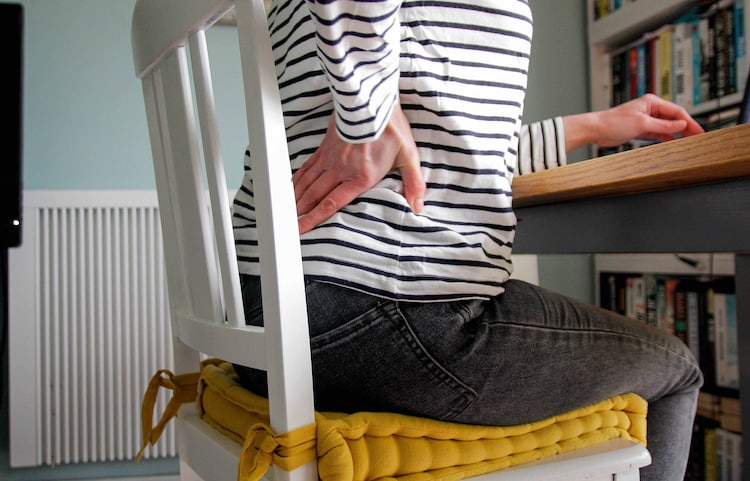What is dead butt syndrome?
Dead-butt syndrome, also known as gluteal amnesia, is a condition in which the gluteal muscles become weak and unable to activate properly due to prolonged inactivity, especially sitting.
We all know that sitting for hours is bad for our health. It can wear out the entire system and lead to many problems like back and neck pain, stiffness and loss of bone density. One of the many problems caused by sitting for long hours is dead butt syndrome.
Despite its peculiar name, dead butt syndrome or gluteal amnesia comes with serious consequences. It may start with mild symptoms such as weakness or stiffness in the lower back, hips and legs, but it can also develop into difficulty standing and walking, as well as misalignment of the entire body.
People who lead a sedentary lifestyle or those who are glued to their chair due to a desk job are at risk of developing dead butt syndrome.
What is dead butt syndrome?
Dr Rahul Kaul, orthopedic surgeon at NCR-based Sharda Hospital, says, “Dead butt syndrome, also known as gluteal amnesia, is a condition in which the gluteal muscles become weak and fail to activate properly due to prolonged inactivity, especially sitting.”
Amnesia literally means forgetting. In this case, prolonged sitting causes the glute muscles to forget how to contract correctly during locomotion, ultimately affecting posture and range of motion.
The glutes are a group of three muscles that are located on the outside and back of the buttocks. Together, they play a vital role in a variety of body movements. They act as a base for the spine, stabilize the buttocks, and also help lift the legs. These muscles relax when you sit, and sitting for long periods on a regular basis affects their functioning.

“Due to inactivity and lack of movement, these muscles become shortened, atrophied and weak. This has a detrimental effect on pelvic and hip movement, balance and coordination, putting extra and abnormal stress on the lower back and leg muscles. This hinders normal walking, running and sitting,” explains Dr Sudhir Kumar Srivastava, Professor of Orthopaedics, KJ Somaiya Medical College and Research Centre, Mumbai.
what does it feel like?
The main symptoms of gluteal amnesia are pain or discomfort in the legs, hips, or lower back caused by prolonged sitting.
“Some people may experience reduced mobility and even difficulty in standing straight,” says Dr Akhilesh Yadav, Associate Director, Orthopaedics and Joint Replacement, Max Hospital, Vaishali, New Delhi.
A person with dead butt syndrome may find exercises such as squats and lunges difficult, and may also experience weakness or numbness in the glutes, hip or thigh area.

Dr Shrivastava says, “Usually such people complain of weakness in the buttock muscles and get tired quickly while standing. They find it difficult to get up from a sitting position, stand on one leg, climb stairs, lift weights and run. Hip extension becomes difficult and sometimes causes pain. They start adjusting their lower back and knees to keep them straight. They have trouble doing glute bridges and single-leg squats. On examination, it is found that the gluteal muscles are weak and atrophied.”
Improper functioning of the glutes can also lead to arthritis in the knees.
Prevention and treatment
Exercise can help prevent as well as treat dead butt syndrome. Health experts suggest maintaining an overall active and healthy lifestyle and taking breaks to stand and walk for a few minutes during work hours.
Take the following steps to prevent dead butt syndrome from developing:
- Exercise regularly.
- While working for long hours, take several short breaks for stretching and a short walk. You can also set an alarm if you want.
- Maintain proper posture when sitting; don’t slouch and make sure your knees are at a 90-degree angle and your back is supported.
- Take up hobbies like swimming, dancing, or playing sports to keep the pelvic and back muscles active.
- Strengthen the glutes and pelvic muscles with exercises such as glute bridges, clamshells, squats, lunges and deadlifts.
As far as treatment goes, reactivating the glute muscles is the main goal.
“For re-activation, exercises for the gluteal muscles need to be started slowly. This can include initially contracting the buttock muscles even while sitting or lying down and then doing exercises like clamshell and glute bridge,” says Dr Srivastava.
One may also need physiotherapy. “Exercises such as glute bridges and hamstring stretches that aid in maintaining the strength and flexibility of the glutes are often used in physiotherapy. The key to managing gluteal amnesia is to move your body regularly throughout the day,” says Dr Kaul.
Activity breaks, stretching, and posture correction are also needed to control dead butt syndrome.
“Stretching increases range of motion and reduces stiffness. So stretch your glutes and hip flexors regularly,” says Dr. Yadav.
“Physiotherapists may also be needed to address muscle imbalances,” he adds.
Improving posture can help prevent the glutes from becoming further weak.
Sitting too much is dangerous
The dangers of prolonged sitting go far beyond dead butt syndrome. Whether it’s your laptop you’re glued to or the television screen to watch ‘one more episode’, prolonged sitting can secretly lead you to obesity, heart disease and diabetes.
“Sitting for long periods of time also weakens joints and muscles, increasing the risk of diseases like deep vein thrombosis (DVT). It can also have a negative impact on mental health, leading to mood swings, fatigue, and low energy,” warns Dr Yadav.
Aim to get up for 5 minutes every 30 minutes. Now is the perfect time to start!





